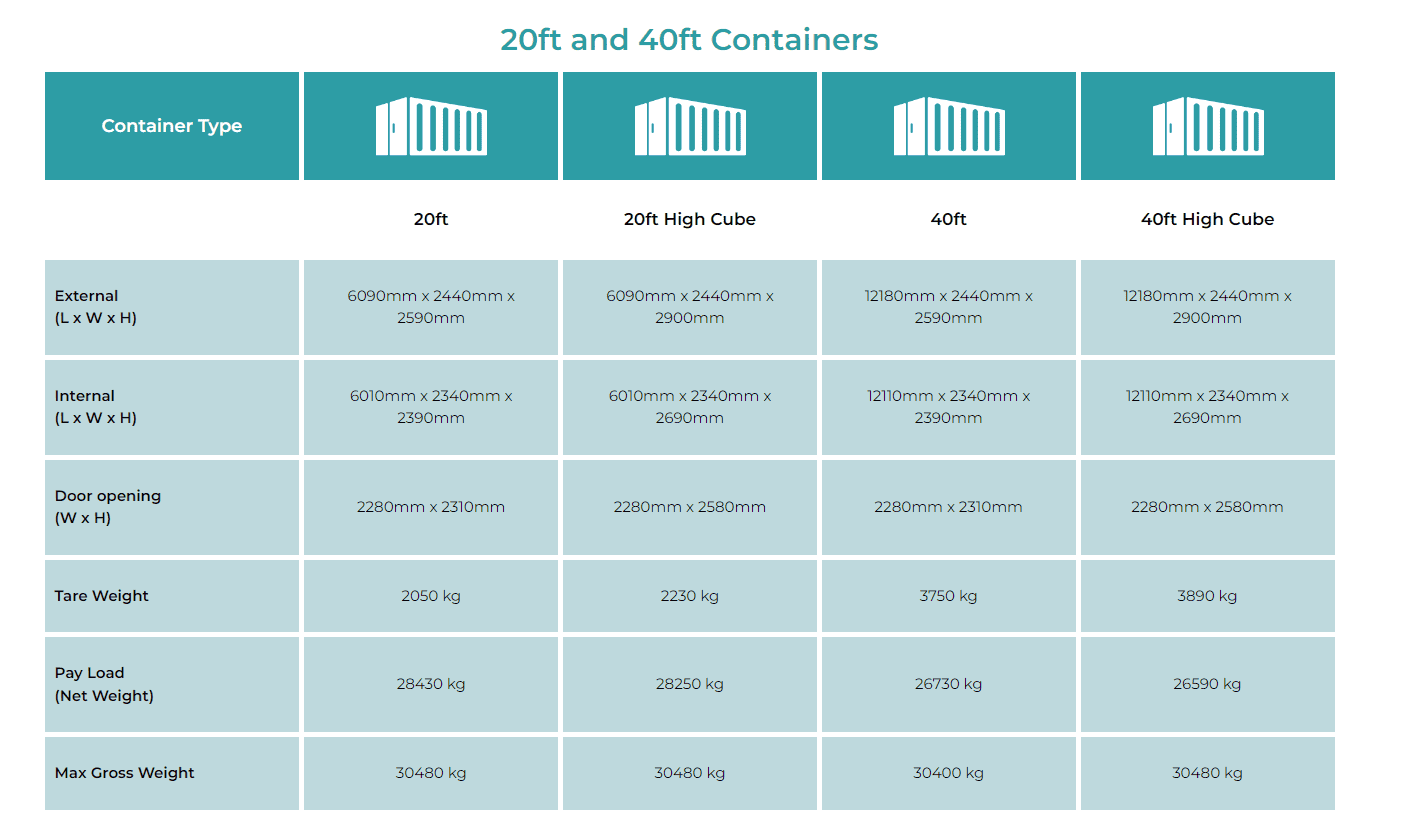Different types and sizes of shipping containers
Question:
My merchandize is packed in a master carton, dimensions: 15.5*33*1.88 cm and each carton weighs 17.5 kg.
How do I know what volume (CBM) can go in a shipping container of 40/20?
Answer:
To simplify, let’s assume there are many types of shipping containers, most of which, are not in use by standard Amazon sellers. These are typically containers for refrigeration or for industrial goods with abnormal dimensions or weights.
Amazon sellers will mostly ship goods on 20GP, 40GP or HQ40 containers.
Let's get down to the nitty-gritty and figure out the different types of containers based on their dimensions, volumes, and weights.
Container 20GP
Internal measurement: length/width/height: 5.898 m/ 2.35 m/ 2.393 m
Max. container volume: 32.6 sqm (CBM)
Practically, it is feasible to load around 28 CBM max.
Those shipping on pallets from the destination country and using an "American" pallet when shipping to the USA, a total of 10 pallets can be loaded.
Those using European pallets, a total of 11 pallets can be loaded.
In theory, a 20-foot container can hold 28 tons, but in most cases, such containers weigh 10 tons.
Kindly refer to the note at the end of the post about the maximum weight that can be loaded into containers.
Container 40GP
Internal measurement: length/width/height: 12.025 m/ 2.352 m/ 2.393 m
Max. container volume: 68 sqm (CBM)
Practically, it is feasible to load around 50-55 CBM max.
Those shipping on pallets from the destination country and using an "American" pallet when shipping to the USA, a total of 21 pallets can be loaded.
Those using European pallets, a total of 25 pallets can be loaded.
In theory, a 20-foot container can hold 26.5 tons, but in most cases, such containers weigh 10 – 12 tons.
Here too, kindly refer to the note at the end of the post about the maximum weight that can be loaded into containers.
Container 40HQ
Internal measurement: length/width/height: 12.025 m/ 2.352 m/ 2.585 m
Max. container volume: 76 sqm (CBM)
Practically, it is feasible to load around 66-68 CBM max.
In theory, this type of container can hold up to 24.8 tons, but in most cases, such containers weigh 18 tons.
Here too, kindly refer to the note at the end of the post about the maximum weight that can be loaded into containers.

In other words, if we go back to the original question and remember how to calculate volume of a master carton that measures: 1.88*33 * 15.5 , total of 0.096 CBM
All that is left to do is multiply the no. of cartons and calculate how many cartons can fit in the different types of containers.
A 20GP container with max. volume of 28 CBM, can containerize close to 0.096 * 290 cartons = 55.5 CBM.
A 40GP container with max. volume of 55 CBM, can containerize close to 0.096 * 580 cartons = 55.5 CBM.
A 40HQ (high) container with max. volume of 68 CBM, can containerize close to 0.096 * 700 cartons = 67.5 CBM.
I’d like to give you two tips:
- Full containers are a key element in shipping by sea. Having said that, full containers incur many expenses that cannot be predicted until after delivery at the destination.
Thus, for those without experience, I would recommend doing so with an expert that understands the expected expenses at the destination and after delivery.
- Generally, shippers engaged in ECOMMERCE take out loads with volumes under 50 CBM only by LCL (partial load) and not as a container. This is to avoid the additional expenses that are not applicable to partial loads.
Therefore, I recommend that in almost all cases, for goods that have a volume of 25 CBM or even up to 50CBM, send as a partial load, not a full container.
The main advantage of sending full containers is the speed of delivery. The majority of partial loads pass through an intermediate warehouse before being delivered, with the exception of direct lines to specific Amazon warehouses.
When shipping full containers – transferring the container from the originating port to its final destination, should be done directly. i.e., without going through an intermediate warehouse, which, of course, shortens shipping times.
To summarize - there are many advantages to sending partial cargo, as well as sending goods as a full container.
An advanced or beginner merchant should know the advantages and disadvantages of each shipping method, understand what expenses can be expected, and make an informed decision.
A quick note about container weight:
Different countries have different regulations and laws regarding the weight that can be transported on the road.
Typically, in the USA, a container can carry around 18-18.5 tons net (total weight around 22 tons).
It is theoretically possible to load more goods and send 40HQ containers up to a weight of 25 tons (net weight of goods), but in practice this is not possible due to the weight exceeding the local transport laws.